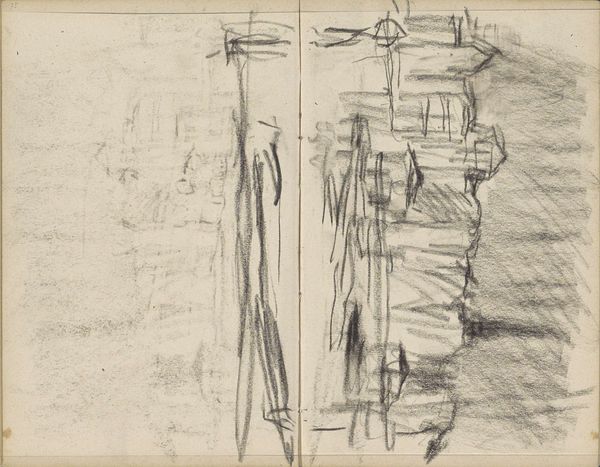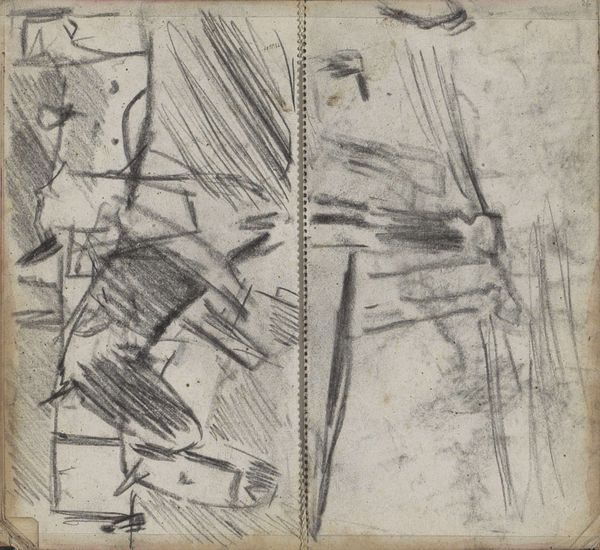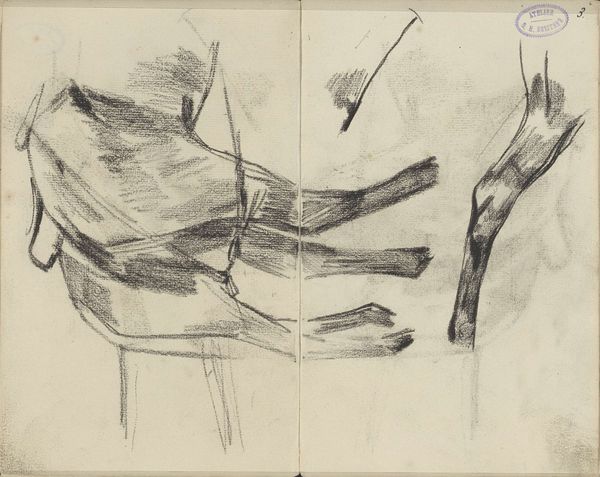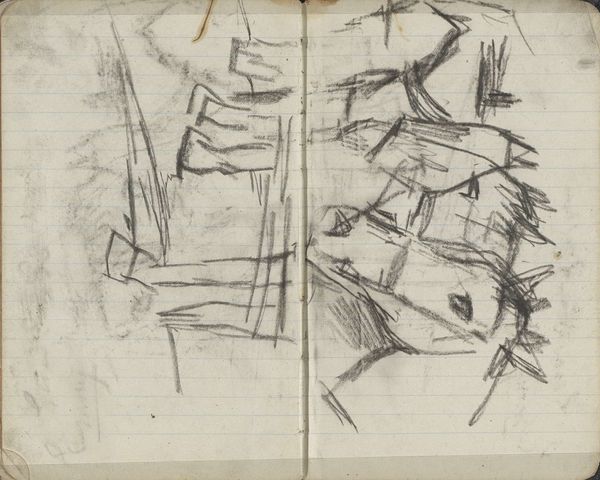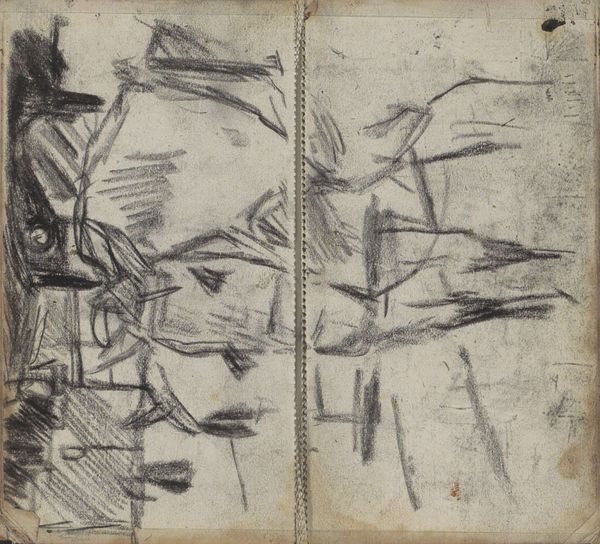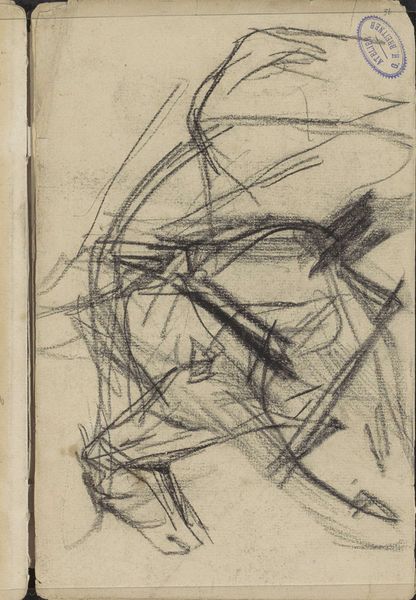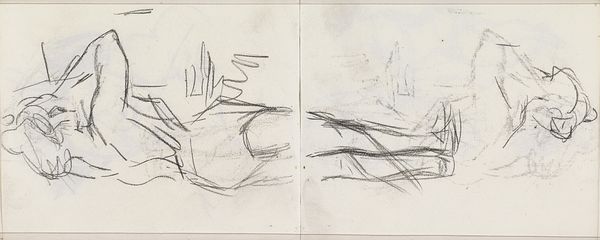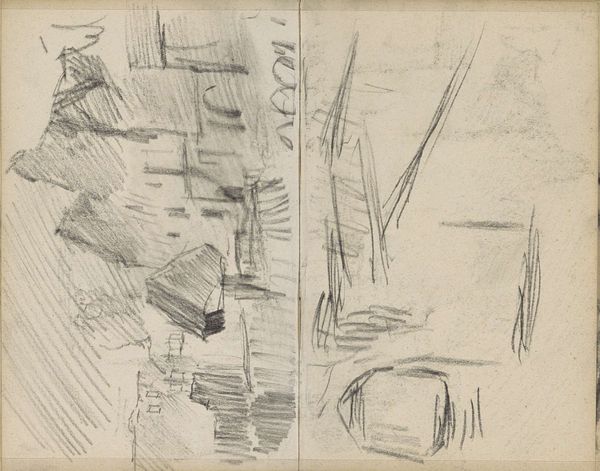
Copyright: Rijks Museum: Open Domain
Editor: We're looking at "Standing Woman," a pencil drawing on paper, created around 1895 by George Hendrik Breitner, housed at the Rijksmuseum. It’s really just a sketch, but it's captivating. There is an urgency about the lines and forms... What stands out to you in this work? Curator: The sketch vibrates with the symbolic language of the era. Breitner, an Impressionist, was capturing a fleeting moment, yes, but also tapping into a deeper vein of societal anxieties and burgeoning freedoms of the late 19th century. Look at how the figure's form is emerging out of a shadowy background... Does that remind you of anything? Editor: A sense of mystery? The woman is standing, yet the lack of clear definition around her form makes her appear almost ghostly... Perhaps something transitional? Curator: Exactly! The ambiguity resonates with the societal shifts concerning women's roles. Note the subtle, suggestive lines, like those around the head and shoulders. The soft rendering isn't merely about imprecision; it evokes a state of becoming, mirroring the era's shifting identity. Do you perceive that symbolism in other aspects of the work, such as in her pose or garments? Editor: Maybe... There is a stiffness to the posture; not graceful, as one might expect. It's like an intentional anti-ideal. Perhaps a symbol of social discomfort? Curator: An astute observation. Remember, Breitner was drawn to the everyday and often unglamorous aspects of life. Through that "ungraceful" posture, Breitner reveals the tensions within prescribed feminine roles and offers us a glimpse into the emerging modern woman. Editor: It is amazing how much social information and cultural commentary can be conveyed in such a simple, seemingly off-the-cuff drawing. It gives a lot to think about. Curator: Indeed. It is an invitation to unpack our preconceptions, unveiling the enduring symbolism of the human form and dress.
Comments
No comments
Be the first to comment and join the conversation on the ultimate creative platform.
